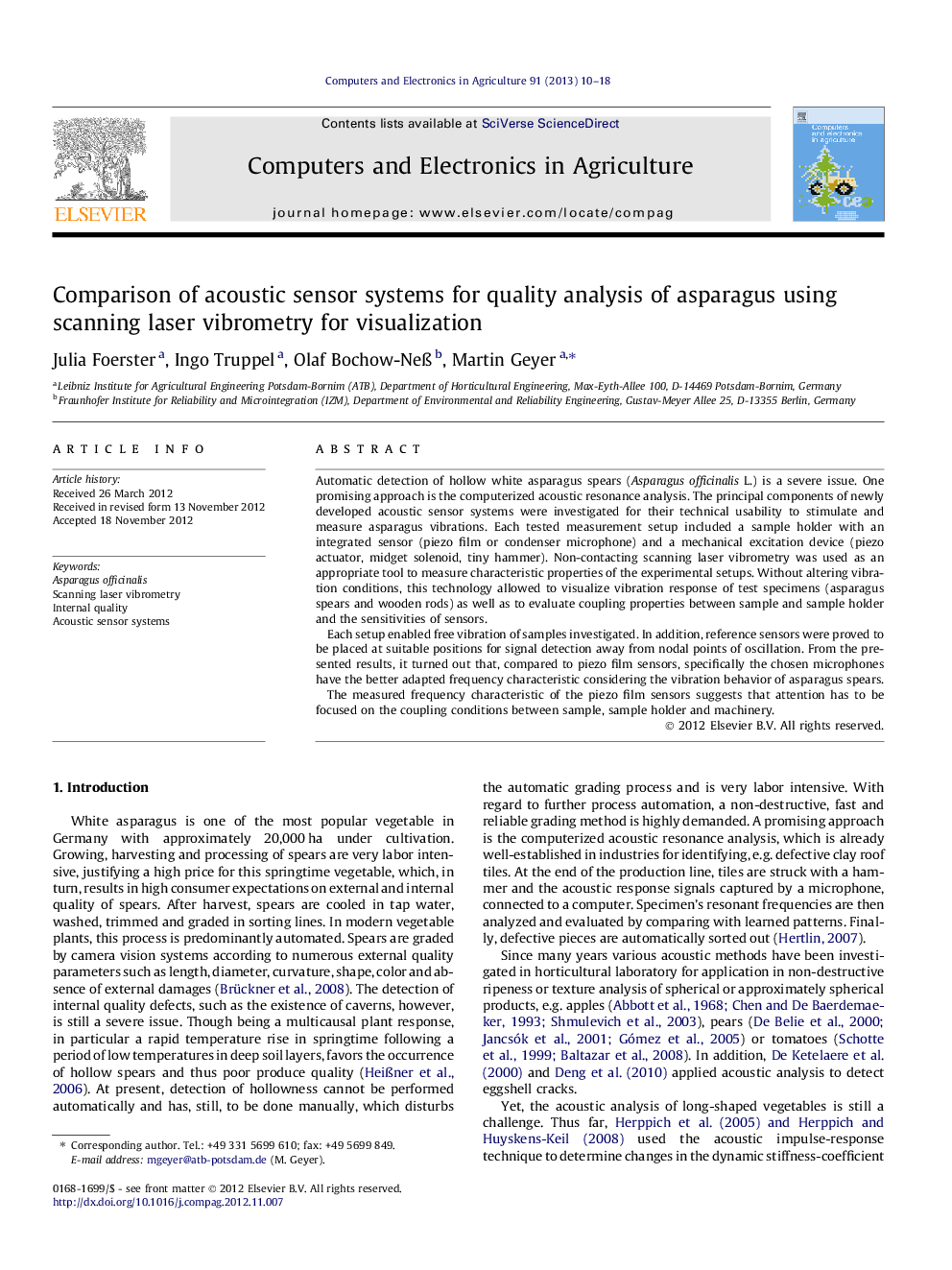| Article ID | Journal | Published Year | Pages | File Type |
|---|---|---|---|---|
| 84527 | Computers and Electronics in Agriculture | 2013 | 9 Pages |
Automatic detection of hollow white asparagus spears (Asparagus officinalis L.) is a severe issue. One promising approach is the computerized acoustic resonance analysis. The principal components of newly developed acoustic sensor systems were investigated for their technical usability to stimulate and measure asparagus vibrations. Each tested measurement setup included a sample holder with an integrated sensor (piezo film or condenser microphone) and a mechanical excitation device (piezo actuator, midget solenoid, tiny hammer). Non-contacting scanning laser vibrometry was used as an appropriate tool to measure characteristic properties of the experimental setups. Without altering vibration conditions, this technology allowed to visualize vibration response of test specimens (asparagus spears and wooden rods) as well as to evaluate coupling properties between sample and sample holder and the sensitivities of sensors.Each setup enabled free vibration of samples investigated. In addition, reference sensors were proved to be placed at suitable positions for signal detection away from nodal points of oscillation. From the presented results, it turned out that, compared to piezo film sensors, specifically the chosen microphones have the better adapted frequency characteristic considering the vibration behavior of asparagus spears.The measured frequency characteristic of the piezo film sensors suggests that attention has to be focused on the coupling conditions between sample, sample holder and machinery.
► Acoustic systems for quality evaluation of asparagus spears were investigated. ► Systems include sample holder, sensor and mechanical excitation device. ► Scanning laser vibrometry evaluates setup and identifies samples natural frequencies. ► Setups are suitable to excite and measure vibrations of quasi-cylindrical bodies.
